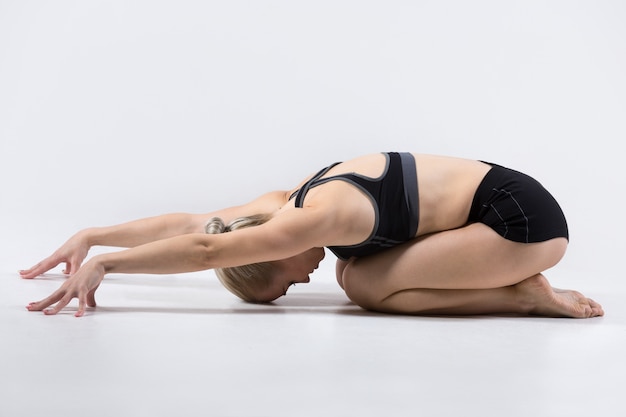
Yoga isn’t just about flexible limbs; it can also boost your memory, and improve your heart and bone health. In the UK, people are spending around £790 million yearly on yoga classes and gear. While some yoga trends are getting quite quirky, like rage or naked yoga, the real benefits of yoga are being confirmed by science.
Researchers at UCLA found that doing yoga and meditation for three months was better at reducing age-related brain impairment than traditional memory exercises. Another study showed it helped breast cancer survivors sleep better.
Lucy Edge, a 53-year-old former advertising executive, turned to yoga instead of anti-depressants when she fell into a deep depression. After spending six months in India learning yoga, she returned feeling happier and more content. She has since written books about yoga and created Yoga Meds, listing over 300 clinical trials showcasing yoga’s benefits for various health issues like arthritis and insomnia.
If your memory exercises have only included puzzles, it might be time to include yoga. UCLA research compared 12 weeks of memory exercises to yoga and meditation on adults over 55. Those who did yoga not only showed better memory but also had less depression, anxiety, and stress.
Yoga can also benefit heart health. A review in the European Journal of Preventative Cardiology in 2014 showed yoga could lower heart disease risk as much as conventional exercise like brisk walking. Stress, a major contributor to heart disease, can be managed better with yoga, reducing blood pressure and heart rate.
For beginners, Charlotte Watts suggests trying a series of gentle yoga poses from her book “The De-Stress Effect.” Restorative yoga, which involves supported postures held for up to 12 minutes, is another good option. Sarah Shone, a physiotherapist, integrated yoga into a rehabilitation program for back pain, and 87% of participants reported less pain. Yoga also helps with incontinence by targeting pelvic floor muscles and can improve bone density.
If you’re starting yoga, inform your teacher about any health issues and choose gentler styles like Hatha or Iyengar yoga. If you have specific conditions like back pain, check with your doctor about subsidized yoga programs.
Good yoga props can enhance your practice. When choosing a yoga mat, consider its storage location, thickness for joint protection, weight, and length for your height. A thicker mat can help if you experience knee or wrist pain. Eco-friendly options like the Valka Yoga Elephant Cork Yoga mat are durable and sustainable. Cork mats are great for gripping even when wet, and they’re naturally antimicrobial and odor-resistant.
For added support in poses, a yoga block can be useful. Cork blocks provide more stability and grip compared to foam blocks.
Not flexible? No problem. Yoga is beneficial regardless of your flexibility level:
– Yin or Restorative yoga uses blankets, cushions, and bolsters.
– Vinyasa Flow connects postures to breath in an energetic sequence.
– Iyengar yoga focuses on alignment with the help of props.
– Anusara yoga combines alignment with flowing movements to music.
– Yoga Therapy offers tailored poses for healing injuries or illnesses.
Want to learn more? Lucy Edge’s latest book, “Down Dog Billionaire,” is available on Amazon.